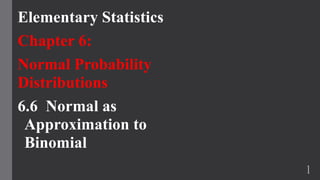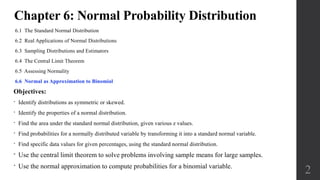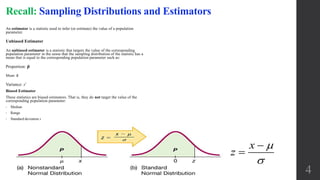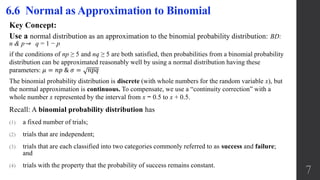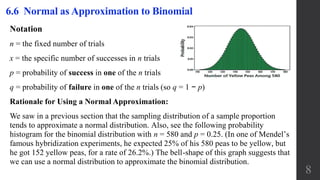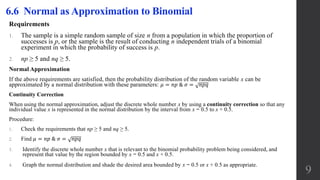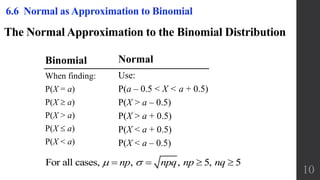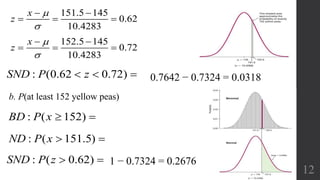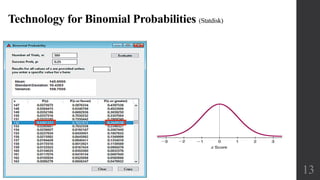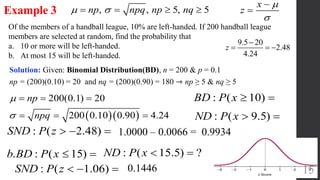The document discusses approximating binomial probabilities with a normal distribution. It defines the binomial distribution and states the requirements for the normal approximation are that np and nq must both be greater than or equal to 5. The normal approximation involves using a normal distribution with mean np and standard deviation npq. Examples are provided demonstrating how to calculate probabilities for binomial experiments using the normal approximation.
